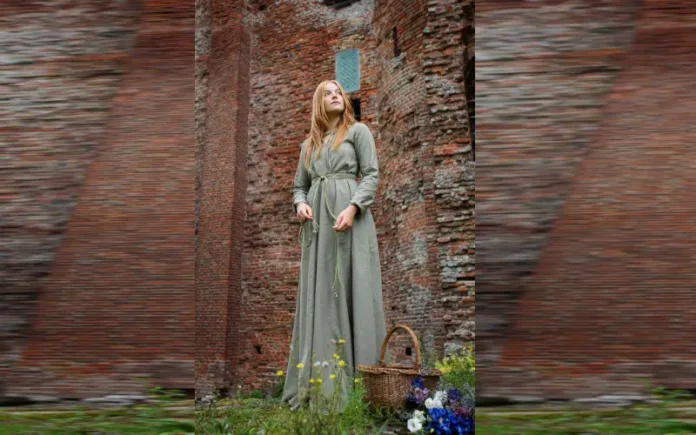The tunic has a rich history that traces back thousands of years, with origins in ancient civilizations such as Greece, Rome, and Egypt. Traditionally, tunics were simple garments, often crafted from natural fibers, and were worn by both men and women. Their versatility made them a staple across various cultures, serving as everyday attire as well as ceremonial garments. In the modern era, the evolution of women’s tunics has seen a dramatic shift influenced by socio-economic changes, fashion trends, and lifestyle needs.
Throughout the centuries, tunics have been reimagined, from the flowing silhouettes of ancient times to more structured versions seen during the Renaissance. These garments often reflected the social status and lifestyle of the wearer, making them more than mere clothing items—they were symbols of cultural identity. As women’s roles in society began to change, particularly during the 20th century, tunics adapted to meet the needs of the evolving woman. Today, they serve as a canvas for self-expression while remaining practical and stylish.
The Modern Tunic: A Fusion of Style and Utility
In the 21st century, women’s tunics have firmly established themselves in the fashion landscape as a fusion of chic aesthetics and functionality. As women juggle multiple roles in both personal and professional spheres, fashion has adapted to prioritize comfort without sacrificing style. The modern tunic provides this balance, making it an essential piece in many wardrobes.
With the rise of athleisure as office attire, tunics have become a go-to option for women seeking versatile clothing that can transition smoothly from day to night. Tailored tunics with structured designs are ideal for the workplace, while loose, flowing cuts are perfect for casual outings. The incorporation of various fabrics—from breathable cotton to luxurious silks—further enhances their adaptability, allowing women to express their style while being practical.
The Influence of Technology and Sustainability
The evolution of women’s tunics has also been shaped by advancements in technology and a growing awareness of sustainability. The demand for eco-friendly fashion has led many designers to create tunics using sustainable materials and ethical practices. Organic cotton, bamboo, and recycled fibers are increasingly popular choices, allowing women to make fashion statements without compromising their values.
Moreover, the rise of online shopping has revolutionized how women discover and purchase tunics. E-commerce platforms provide access to a wider range of styles, sizes, and designers, making it easier for women to find pieces that resonate with their personal aesthetic. This shift has also encouraged brands to embrace diversity in design, creating tunics that cater to various body types, cultures, and personal tastes.
Trendsetting Styles and Designs
The modern tunic comes in a multitude of styles, reflecting current fashion trends and preferences. From the bohemian-inspired tunic adorned with intricate embroidery to the minimalist, oversized silhouettes favored by urban fashionistas, there is a tunic for every occasion and personality.
Prints and patterns also play a significant role in contemporary tunic designs. Floral prints, geometric patterns, and bold color blocks are popular choices that allow women to express their individuality. Additionally, tunics can be easily layered with other garments—paired with leggings for a casual look or over tailored trousers for a more polished ensemble.
Asymmetrical hemlines and unique cuts have emerged as defining features of modern tunics, offering a refreshing alternative to traditional silhouettes. These innovative designs not only add visual interest but also enhance comfort and mobility, making them suitable for various activities.
Embracing Diversity: Tunics for Every Body
The evolution of women’s tunics has been significantly influenced by the fashion industry’s shift towards inclusivity and body positivity. Designers are increasingly recognizing the importance of creating garments that cater to all body types, and tunics are no exception. The flowing nature of tunics allows for a flattering fit that can accommodate a range of silhouettes, celebrating diversity in women’s bodies.
Plus-size fashion has gained momentum in recent years, with brands offering stylish tunics that embrace curves and provide confidence. This focus on inclusivity has empowered women to embrace their unique shapes, leading to a broader acceptance of various body sizes in fashion. As a result, tunics are no longer confined to specific body types but are celebrated for their ability to enhance feminine beauty in all its forms.
The Future of Women’s Tunics
As fashion continues to evolve, the future of women’s tunics looks promising. With a growing emphasis on comfort, functionality, and sustainability, tunics are set to remain a staple in women’s wardrobes for years to come. Innovations in fabric technology may lead to even more versatile and durable materials, while the rise of digital fashion may introduce exciting virtual designs that redefine how we view and wear clothing.
Moreover, as globalization continues to influence fashion, we may see an even richer blend of cultural aesthetics in tunic designs, allowing women to celebrate their heritage while embracing contemporary trends. This fusion of traditional elements with modern sensibilities will ensure that women’s tunics remain relevant and reflect the diverse tapestry of women’s lives.
In conclusion, the modern tunic has evolved significantly from its historical roots, emerging as a chic and functional staple in women’s fashion. With its ability to adapt to changing lifestyles and its embrace of diversity, the tunic stands as a testament to the evolution of women’s fashion and the continuous journey toward self-expression and empowerment.
